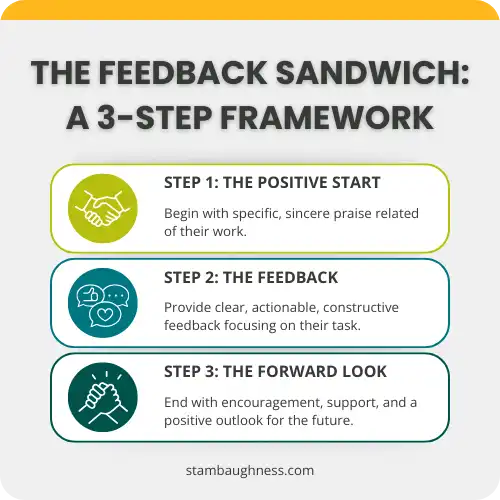How to Give Constructive Feedback That Inspires Growth

As a leader, it is our responsibility to provide valuable feedback to our employees so they can continue to learn and grow. Feedback can be easy to do or extremely difficult, depending on the circumstances. When employees respond to feedback and can adjust their behaviors, we can almost instantly see positive results in their performance.
Feedback is powerful, yet it’s also one of the most underutilized tools in a leader’s toolkit. When delivered with clarity and intention, it becomes a catalyst for growth, a signal of trust, and a way to elevate performance across an entire team. But many leaders either avoid giving feedback altogether or struggle to deliver it in a way that is constructive and empowering. Learning how to provide feedback that inspires rather than stifles can transform your workforce.
First, Establish a Strong Foundation of Trust
It is critical that a leader and employee have a relationship built on trust, and that the employee knows the leader has all good intentions with helping them learn and grow. Consistency in style is also important, so employees have a safe place to receive feedback, which means no yelling, screaming, or eye rolling. Unfortunately, some leaders still choose to give feedback this way.
Establishing a strong foundation of trust and consistency sets the stage for meaningful conversations. Once employees feel safe and supported, leaders can move beyond the basics of day-to-day communication and focus on growth-oriented feedback that helps individuals and the team as a whole continue to grow and develop.
Using Feedback for Growth and Development
A great way to share feedback after a meeting, project, or imitative is to set up a time for reflection. At SN, we refer to it as a post-mortem, but you can give it any creative name that suits your organization. During this time, you can discuss what went well, as well as areas that could be improved for the next time. It’s also a good opportunity to discuss any mistakes made and how to prevent them in the future. This reflection time becomes an excellent forum for teachable moments.
Here are a few real-world examples of growth-oriented feedback opportunities:
- Helping aspiring leaders to read the room, observe body language, and potentially step in if someone is going down a bunny trail.
- The ability to set expectations and then use them as a place to point back to if a milestone was missed or a ball got dropped.
- How to handle an upset client. I, too, will use this time to see what questions or thoughts my team brings forward so I can better gauge their development through real client experiences.

How to Deliver Constructive Feedback
It can be hard to share constructive feedback, especially if you know your employee takes feedback very personally. One effective technique is to ask for permission first:
- “Can I share some feedback with you?”
- “Can I share my observation with you?”
- “Can I share some additional insights with you?”
Always provide background information or context to make it clear that this is not a personal attack, but rather feedback about the role they are performing, not them as an individual.
Technique: The Feedback Sandwich
One effective technique is the feedback sandwich, which can make difficult conversations easier. This involves starting with a compliment, providing constructive feedback, and ending with another positive statement.
Example 1: Correcting a Poorly Formatted Report
Scenario: An employee submits a completed report that does not meet expectations. It is challenging to read, is missing important details, contains spelling mistakes, and uses various font styles.
Feedback Sandwich Approach:
“I really liked the report you created for ABC Company. Could you do something like that instead for XYZ Company? Please also make sure to run spell check and double-check the font before sending it over. I could see us using this format for many more of our projects.”
This approach provides a compliment, while clearly pointing out that the report format needs to be changed, and reinforces the importance of reviewing spelling and fonts, all while ending on a positive and forward-looking note. If this becomes a recurring issue, further discussions will be necessary.
Example 2: Addressing a Meeting Interruption
Scenario: In some situations, people say or do things unintentionally. For example, you share an idea in a meeting and another person interrupts you, leaving you feeling that your ideas aren’t valued.
Direct Feedback Approach:
It is essential to let the person know directly how their actions made you feel. This allows them to become aware of the behavior so they can wait until you or another person finishes their thought before responding in the future.
Elevating Employee Performance: Proven Strategies for AEC Firms
Outdated performance reviews won’t fuel your firm’s future. Join Kristi as she shares a strategic framework for elevating performance, strengthening retention, and accelerating firmwide success.
Attend the live session on October 28th at 2 PM EDT. Can’t make it live? Register to receive the on-demand recording.



